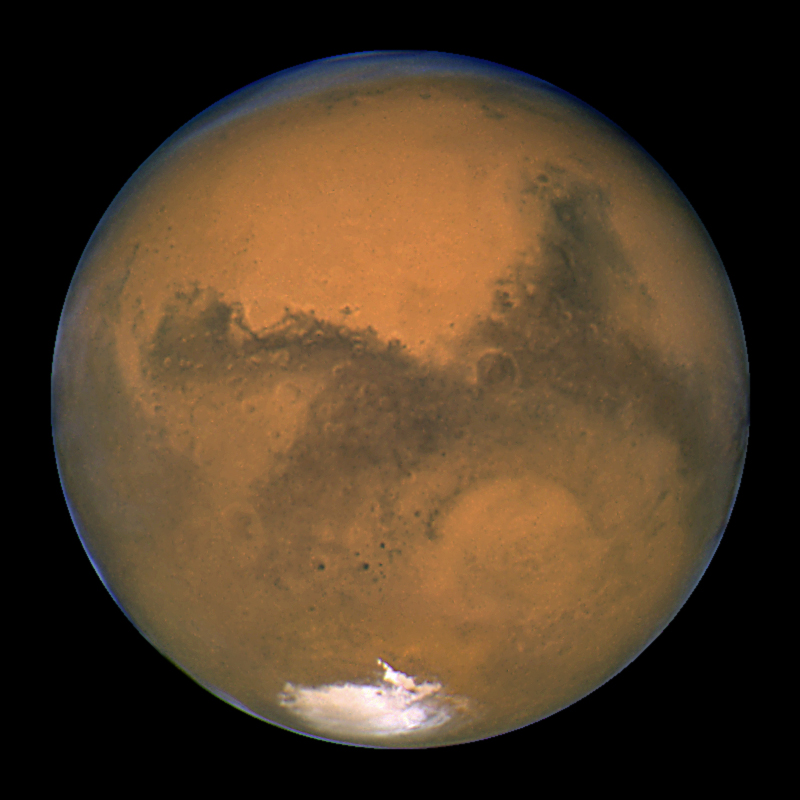Earth Life Likely Came from Mars, Study Suggests

We may all be Martians.
Evidence is building that Earth life originated on Mars and was brought to this planet aboard a meteorite, said biochemist Steven Benner of The Westheimer Institute for Science and Technology in Florida.
An oxidized form of the element molybdenum, which may have been crucial to the origin of life, was likely available on the Red Planet's surface long ago, but unavailable on Earth, said Benner, who presented his findings today (Aug. 28; Aug. 29 local time) at the annual Goldschmidt geochemistry conference in Florence, Italy. [The Search for Life on Mars (Photo Timeline)]
"It’s only when molybdenum becomes highly oxidized that it is able to influence how early life formed," Benner said in a statement. "This form of molybdenum couldn’t have been available on Earth at the time life first began, because 3 billion years ago, the surface of the Earth had very little oxygen, but Mars did. It’s yet another piece of evidence which makes it more likely life came to Earth on a Martian meteorite, rather than starting on this planet."
Organic compounds are the building blocks of life, but they need a little help to make things happen. Simply adding energy such as heat or light turns a soup of organic molecules into a tarlike substance, Benner said.
That's where oxidized molybdenum comes in. Inserting it or boron, another element, into the mix would help organics make the leap to life, Benner added.
"Analysis of a Martian meteorite recently showed that there was boron on Mars; we now believe that the oxidized form of molybdenum was there, too," he said.
Breaking space news, the latest updates on rocket launches, skywatching events and more!
Another point in Mars' favor is the likelihood that the early Earth was completely covered by water while the ancient Red Planet had substantial dry areas, Benner said. All of this liquid would have made it difficult for boron, which is currently found only in extremely dry places, to form in high enough concentrations on Earth when life was first evolving.
Further, Benner added, water is corrosive to RNA, which most researchers think was the first genetic molecule (rather than DNA, which came later).
No indigenous Red Planet organisms have ever been discovered. But it is possible that life on Mars — if it ever existed — may have made its way to Earth at some point, many scientists say.
Some microbes are incredibly hardy, after all, and may be able to survive an interplanetary journey after being blasted off their home world by an asteroid impact. And orbital dynamics show that it's much easier for rocks to travel from Mars to Earth than the other way around.
Wherever Earth life originated, Benner is glad it put down roots on our blue planet.
"It’s lucky that we ended up here nevertheless, as certainly Earth has been the better of the two planets for sustaining life," Benner said. "If our hypothetical Martian ancestors had remained on Mars, there might not have been a story to tell."
Follow Mike Wall on Twitter @michaeldwall and Google+. Follow us @Spacedotcom, Facebook or Google+. Originally published on SPACE.com.

Michael Wall is a Senior Space Writer with Space.com and joined the team in 2010. He primarily covers exoplanets, spaceflight and military space, but has been known to dabble in the space art beat. His book about the search for alien life, "Out There," was published on Nov. 13, 2018. Before becoming a science writer, Michael worked as a herpetologist and wildlife biologist. He has a Ph.D. in evolutionary biology from the University of Sydney, Australia, a bachelor's degree from the University of Arizona, and a graduate certificate in science writing from the University of California, Santa Cruz. To find out what his latest project is, you can follow Michael on Twitter.

